Inviscid Supersonic Flow Over F-16 Aircraft Simulation
$140.00 $70.00 Student Discount
In this project, Inviscid Supersonic Flow Over F-16 Aircraft has been simulated, and the results of this simulation have been investigated.
Click on Add To Cart and obtain the Geometry file, Mesh file, and a Comprehensive ANSYS Fluent Training Video.To Order Your Project or benefit from a CFD consultation, contact our experts via email (info@mr-cfd.com), online support tab, or WhatsApp at +44 7443 197273.
There are some Free Products to check our service quality.
If you want the training video in another language instead of English, ask it via info@mr-cfd.com after you buy the product.
Description
Inviscid Supersonic Flow Over F-16 Aircraft, CFD Simulation Ansys Fluent Training
In this project, supersonic flow over an F-16 aircraft considering inviscid fluid was simulated in Ansys Fluent software, and then the results were investigated. Supersonic speed is the speed of an object that exceeds the speed of sound. It is estimated to be around 343 m/s in the dry air at a temperature of 20 C. In this simulation, the F-16 aircraft experiences 400m/s speed, so the Mach number is 1.16, and the working fluid is assumed to be inviscid, so there would be no shear stress.
Geometry & Mesh
The 3D geometry was imported and generated in Design Modeler software. An F-16 aircraft model is imported and placed at the middle of an enclosure. In addition, an unstructured mesh grid was carried out using Ansys meshing software, and overall, 979273 elements were generated.
Inviscid Supersonic Flow CFD Simulation
Several assumptions have been considered to simulate supersonic flow over F-16 aircraft, including:
- The simulation is Steady, so the conditions don’t change with time.
- The pressure-based solver type was used within the ideal-gas behavior of air density.
- An inviscid viscous model was utilized.
- Gravitational acceleration effects were neglected.
The following table represents a summary of the solution:
| Models(Viscous) | ||||
| Viscous | Inviscid | |||
| Energy | on | |||
| Materials | ||||
| Fluid | Definition method | Fluent database | ||
| Material name | Air | |||
| Density | Ideal-gas | |||
| Cell zone condition | ||||
| Material name | Air | |||
| Boundary condition | ||||
| Inlet | Type | Velocity inlet | ||
| Velocity magnitude | 400m/s | |||
| Outlet | Type | Pressure-oulet | ||
| Gauge pressure | 0 | |||
| Wall-solid | Type | Pressure-far-field | ||
| Mach number | 1.16 | |||
| Solver configuration | ||||
| Pressure-velocity coupling | Scheme | Coupled | ||
| Spatial Discretization | Gradient | Least squares cell-based | ||
| Pressure | Second-order | |||
| Momentum | Second-order upwind | |||
| Initialization | Initialization methods | Standard Initialization | ||
| Run calculation | Number of iterations | 600 | ||
Results
Although air is considered an incompressible fluid in most cases when the speed of fluid increases, there should be an assumption of compressibility; this assumption is specified by a dimensionless factor called Mach number, which represents fluid velocity to the velocity of sound in a defined condition. In this simulation, the inlet velocity is 400m/s, so the Mach number is 1.16 and could be counted as supersonic flow. A pressure-based solver was used along with the ideal-gas behavior of fluid and coupled pressure-velocity coupling scheme instead of using density-based solver and its convergence problems.
The contours of the simulation clearly show the symmetric distribution of pressure and velocity field around the aircraft. The pressure gets to its highest values below the wings and this pressure gradient causes lift force acts on aircraft. Moreover, there is a strong correlation between pressure, density, and temperature. Note that the fluid is assumed to be inviscid, and as a result, the Navier-stokes governing equation is simplified to Bernoulli’s equation.
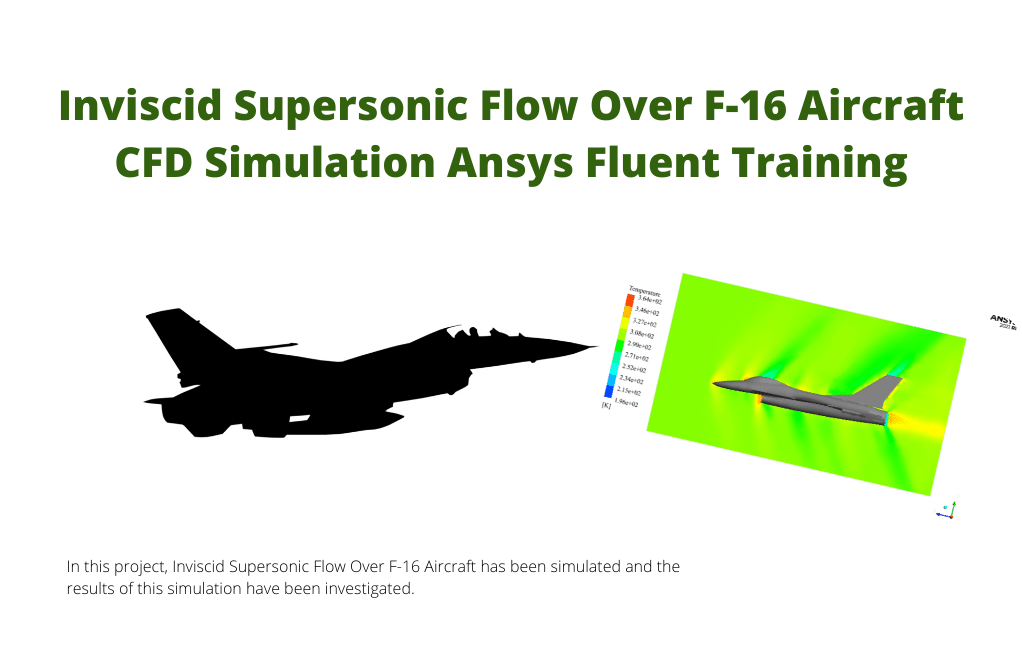
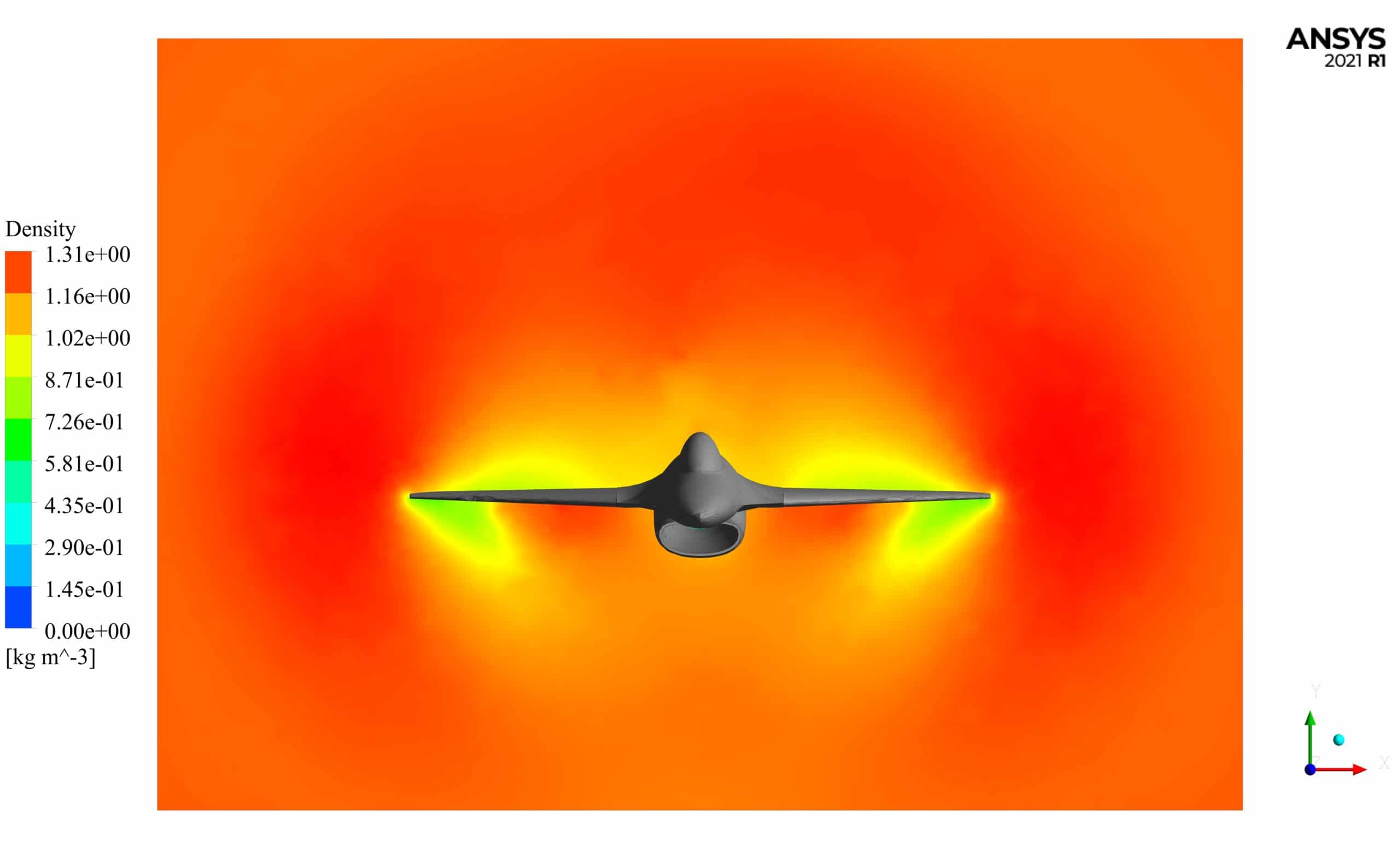
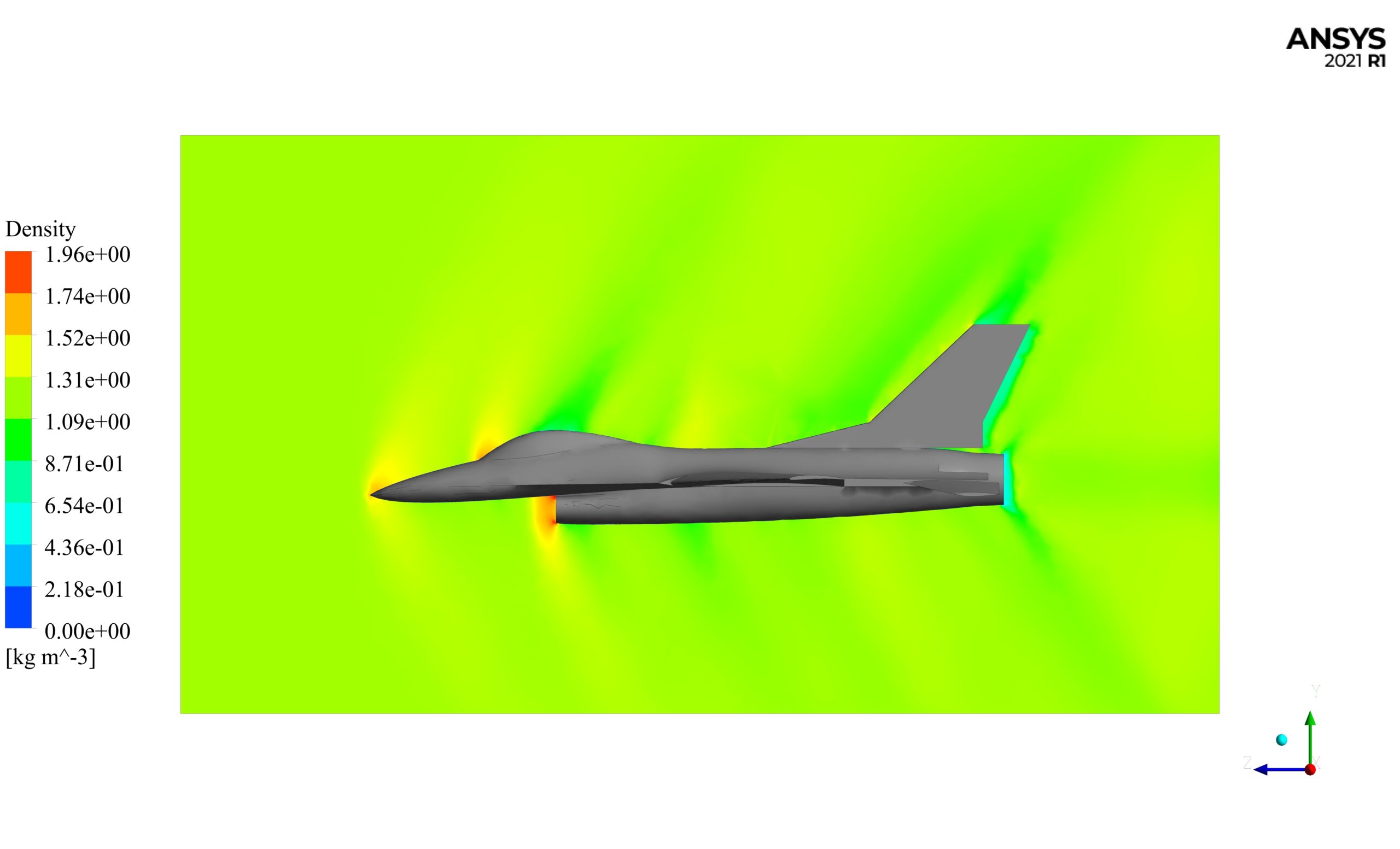
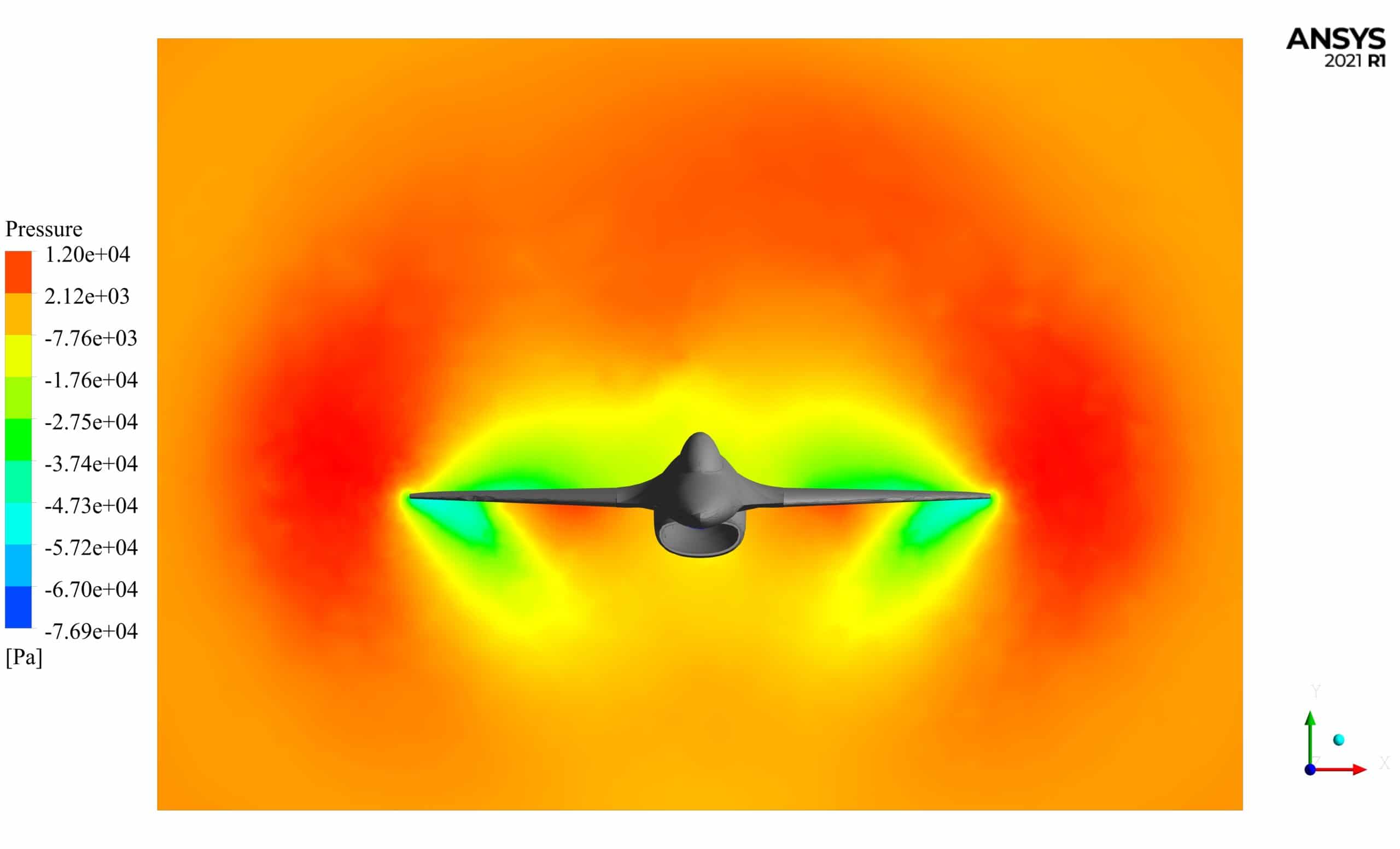
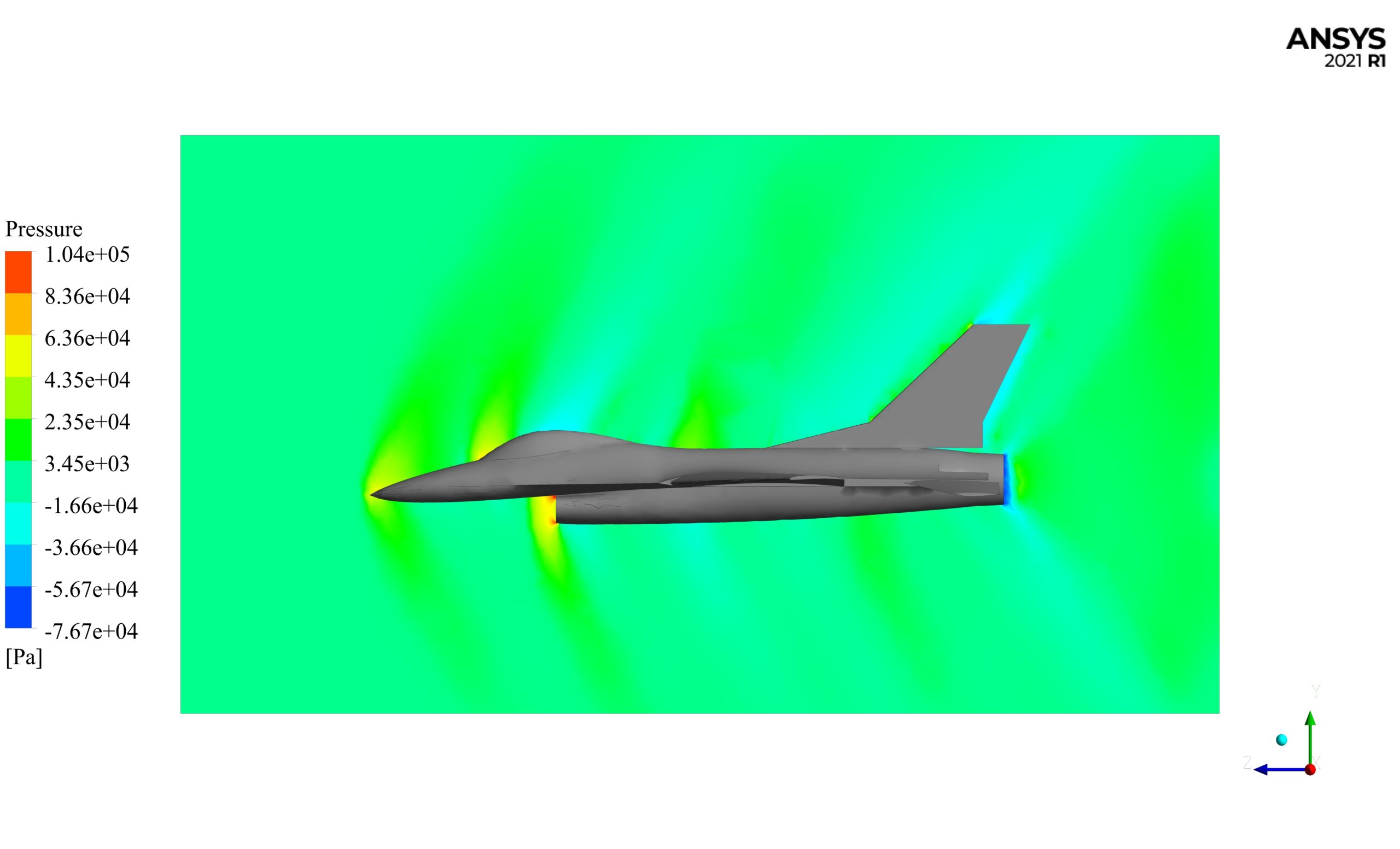
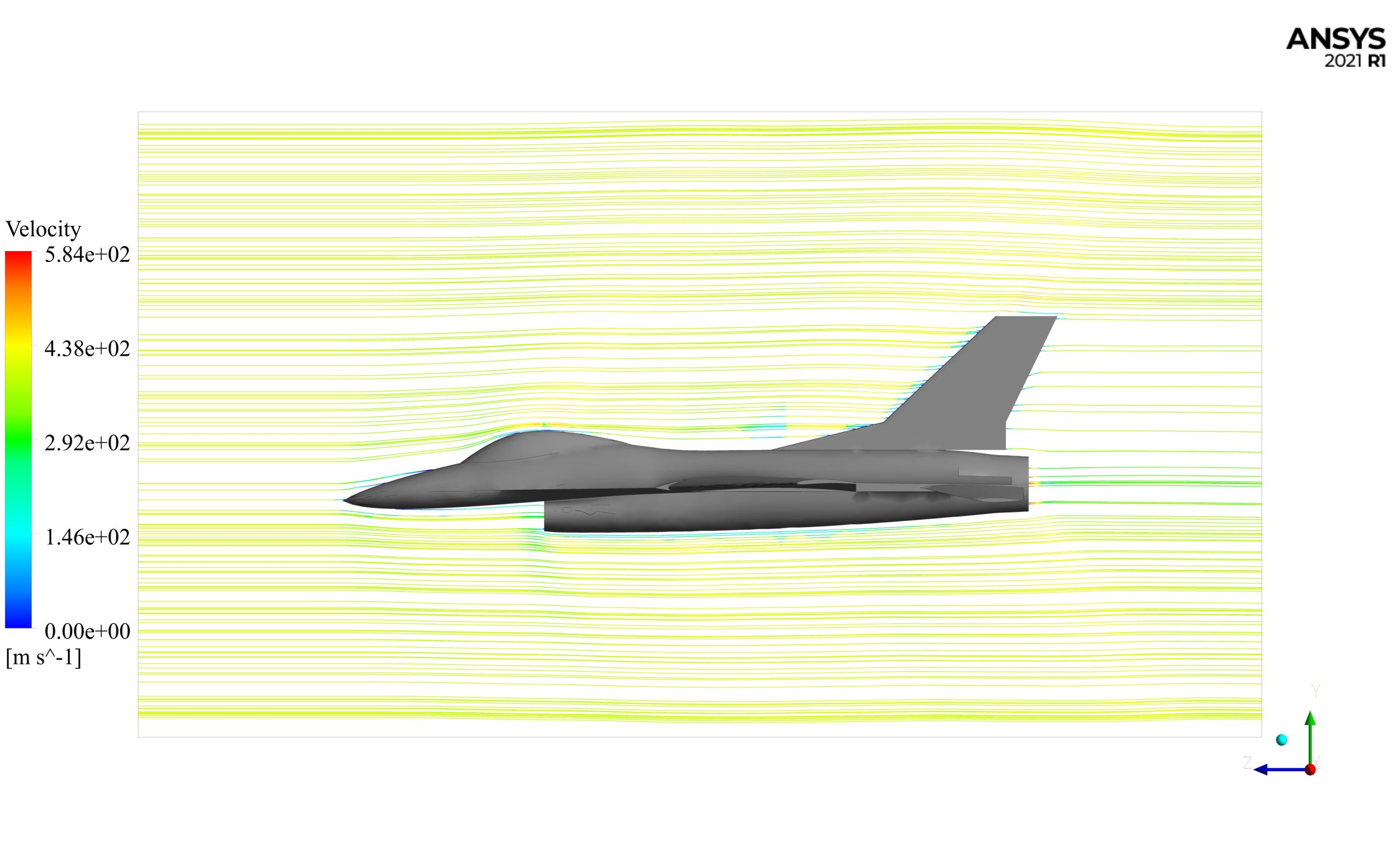
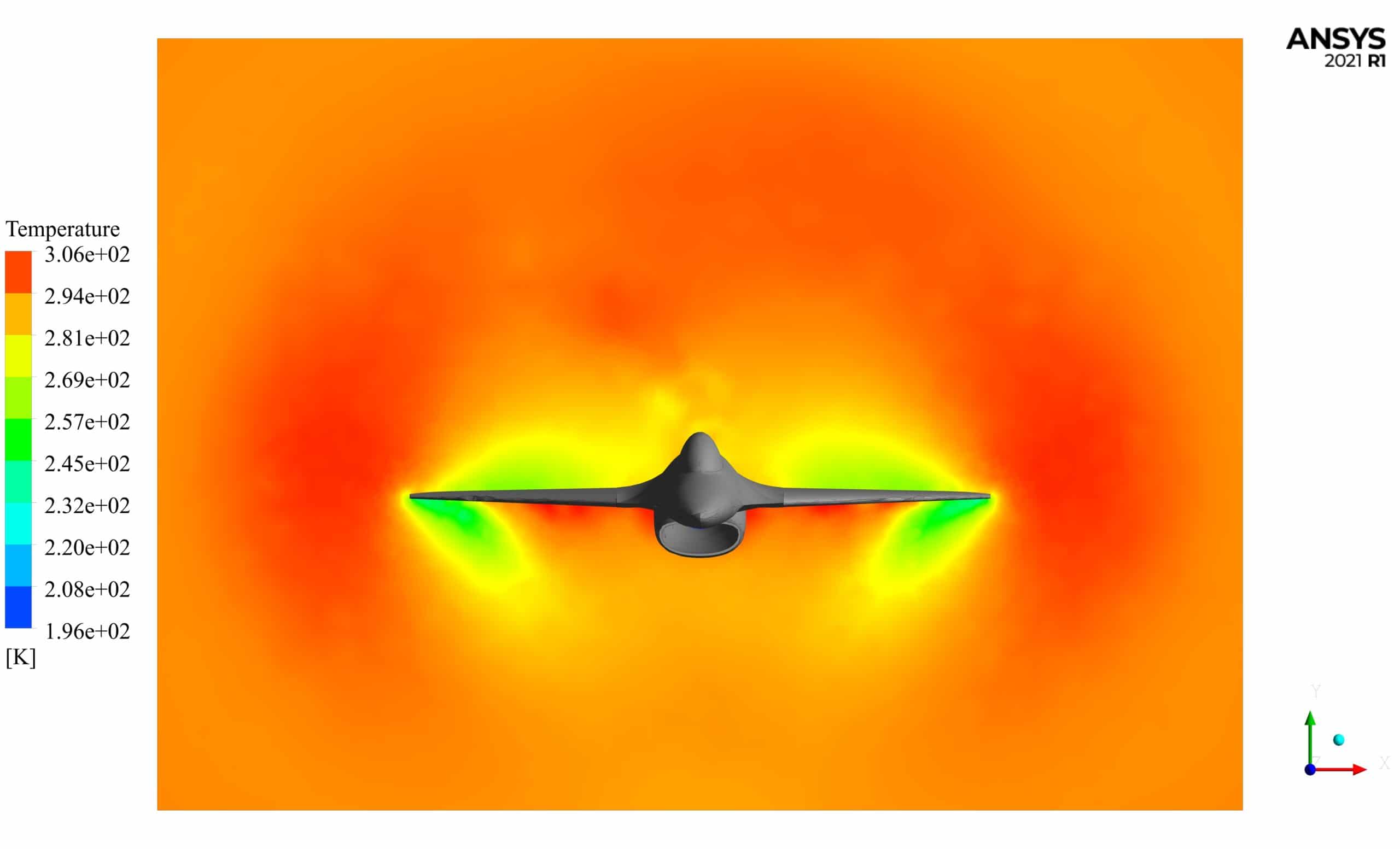
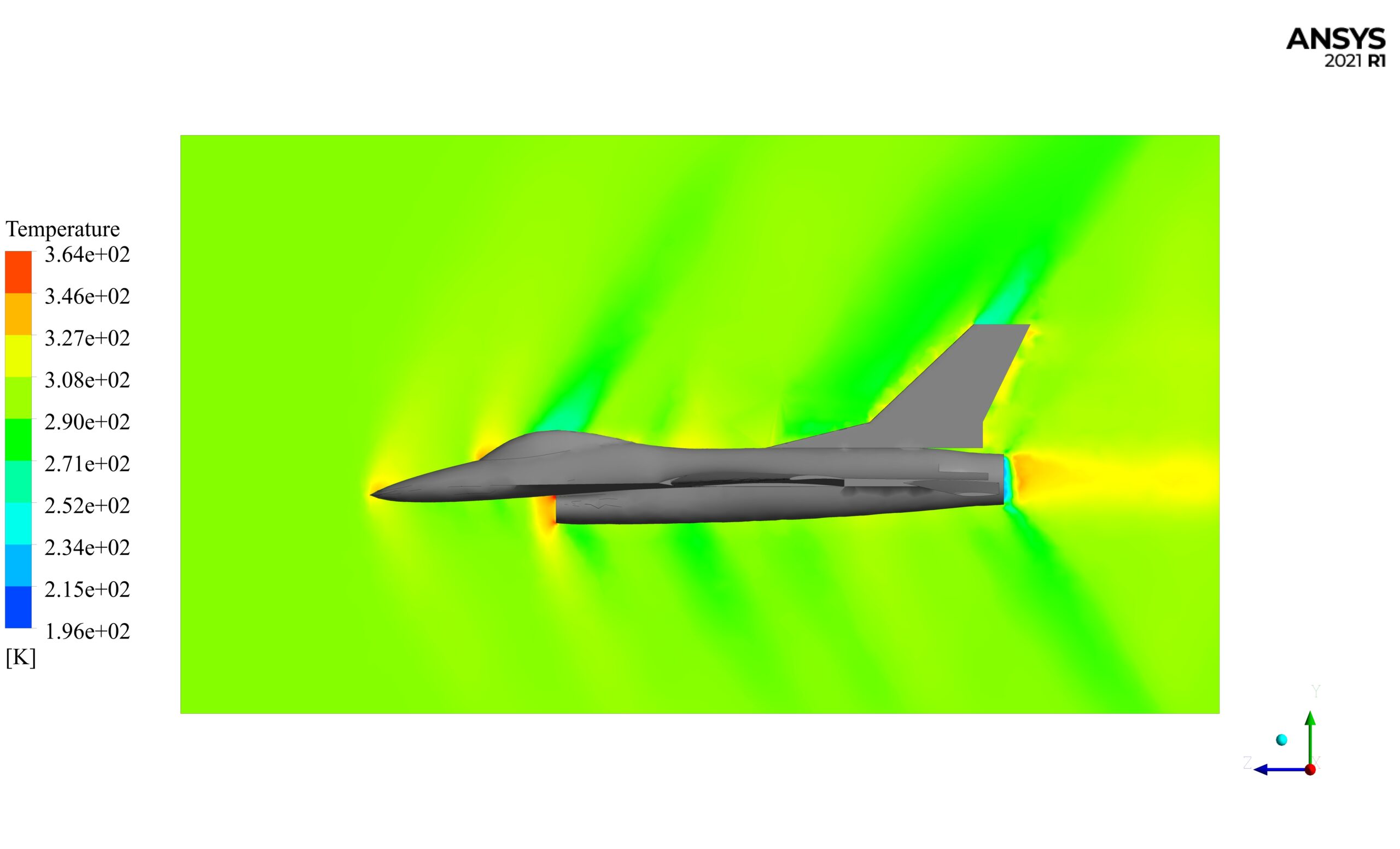
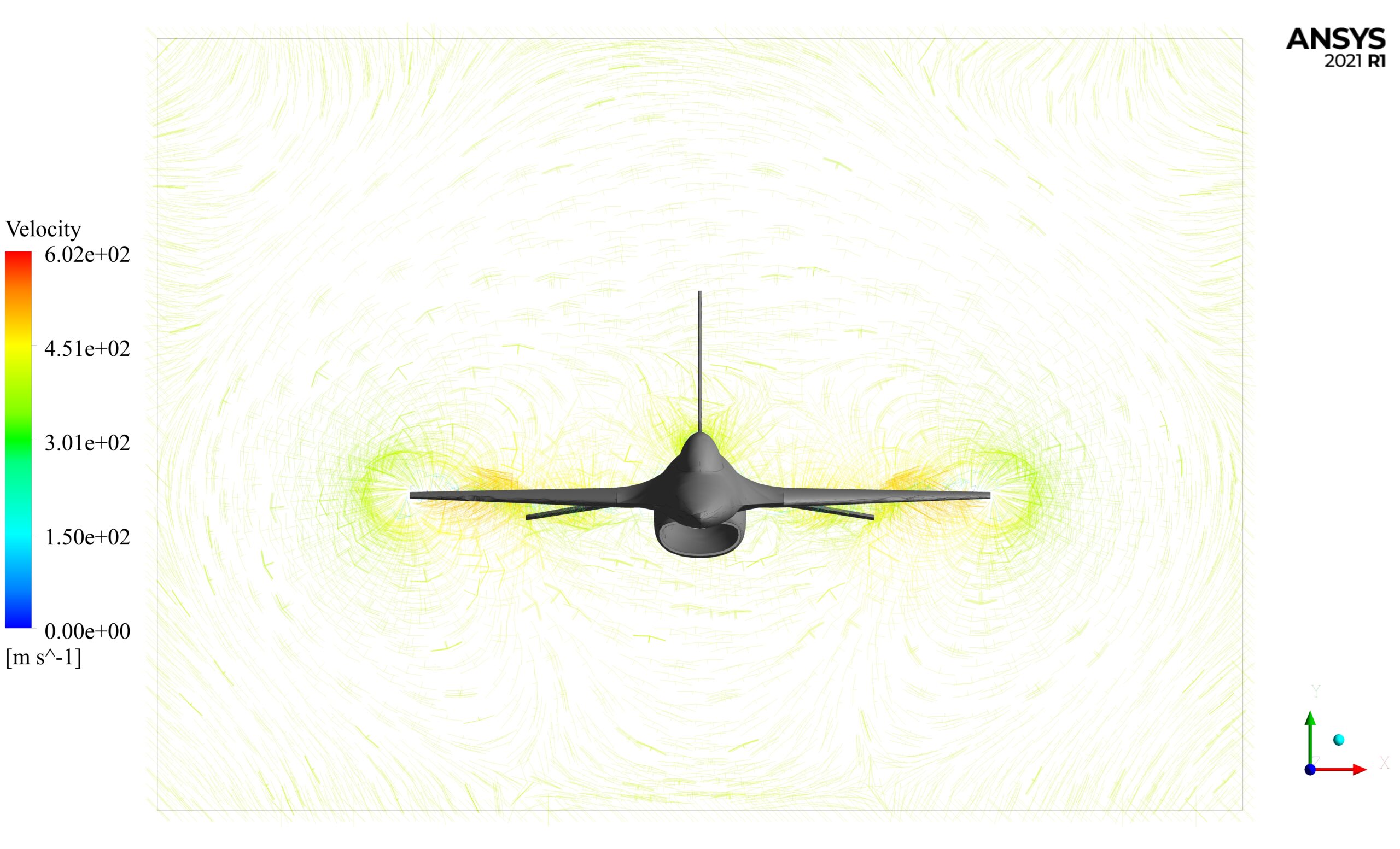
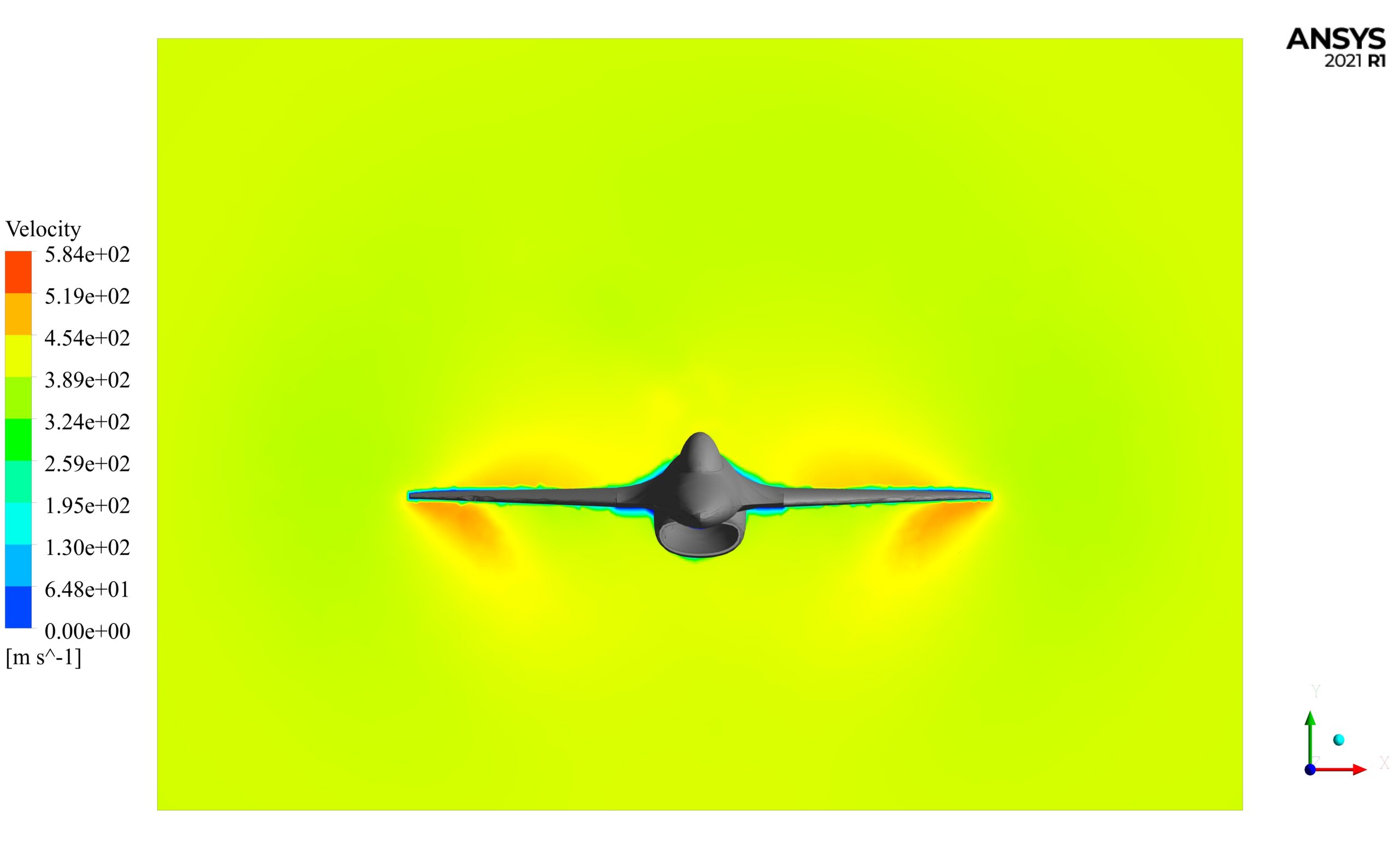
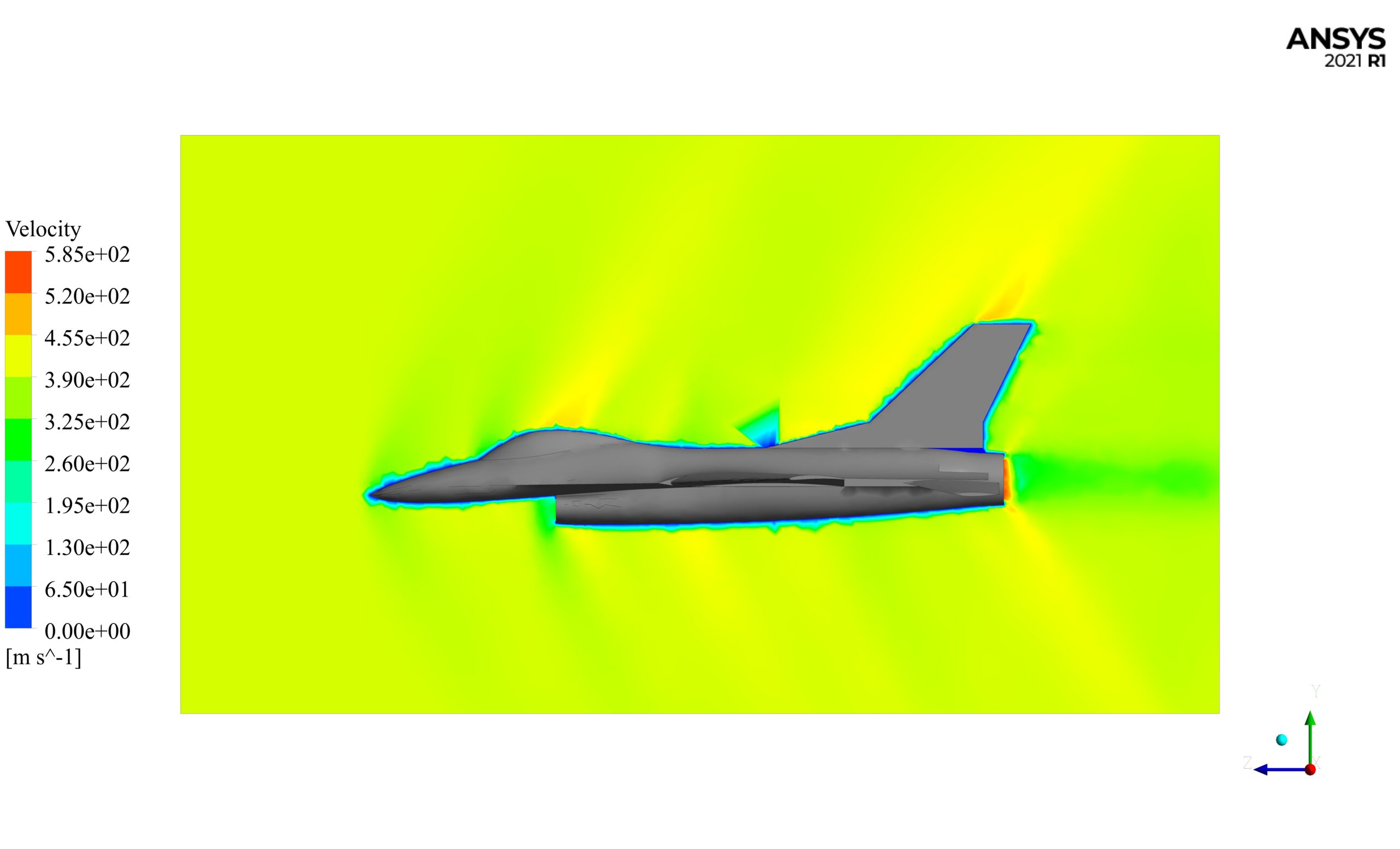



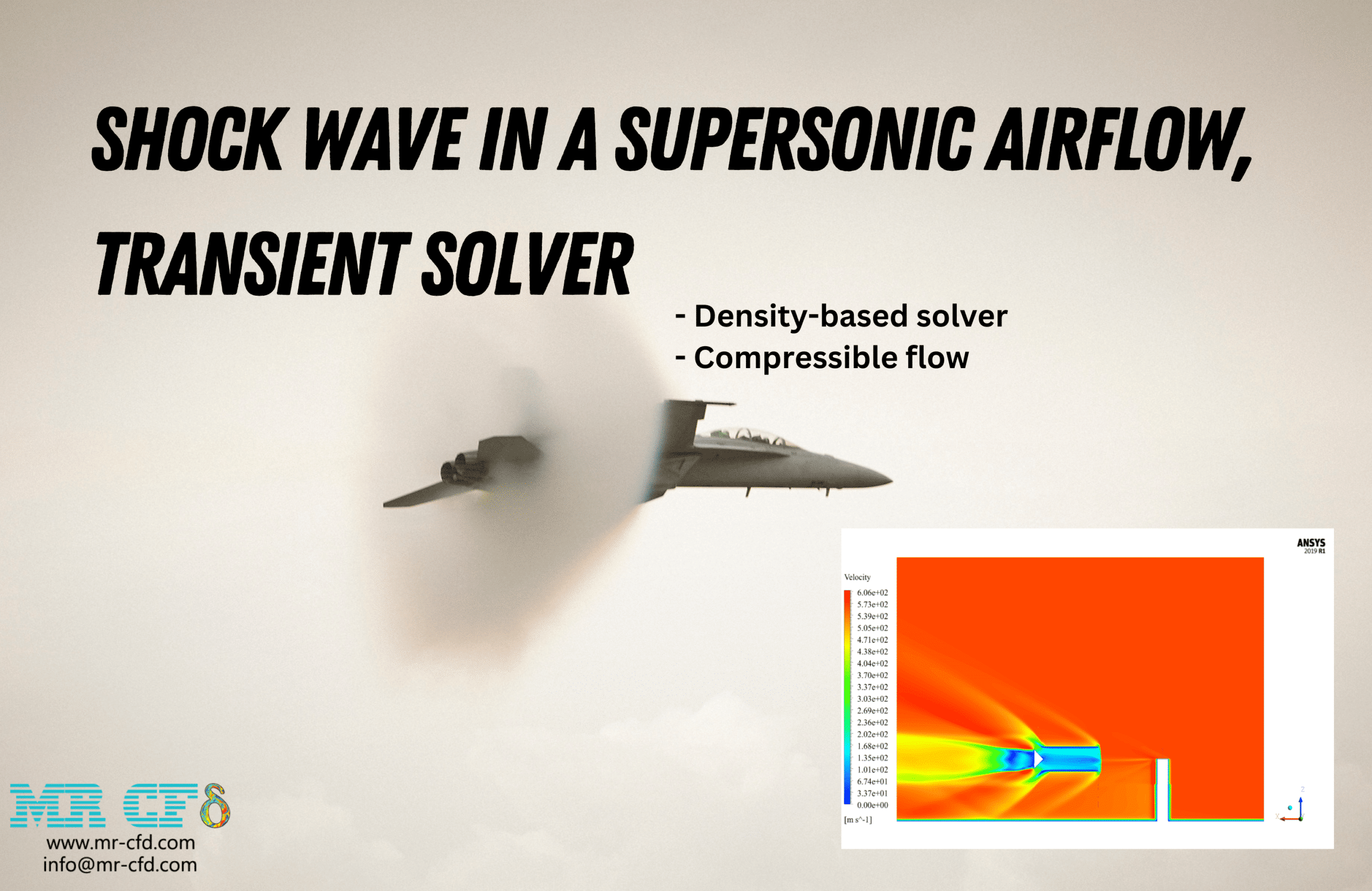

Jamison Walter –
The review is comprehensive and highlights key aspects of the simulation. It’s interesting to see how the assumption of inviscid fluid influences the outcomes and simplifications made. Well done on creating such an in-depth simulation product.
MR CFD Support –
Thank you for your appreciation of our Inviscid Supersonic Flow Over F-16 Aircraft Simulation using Ansys Fluent. We are thrilled to hear that you found the product comprehensive and informative. If you have any further questions or need additional information about similar simulation projects, do not hesitate to contact us.
Zachariah Harris –
Fantastic dataset and approach! The clarity provided about modeling the inviscid supersonic flow over the F-16 and setting up such a complex simulation is invaluable. Details like the chosen Mesh elements and solver configurations were particularly insightful for someone trying to grasp the nuances of CFD analysis at high-speed conditions.
MR CFD Support –
Thank you for your kind words! We’re delighted to hear that you found the details provided in our training valuable and insightful. If there’s anything more you’d like to learn about our CFD simulations or any other aspect of our products, please feel free to get in touch!
Dr. Murray Breitenberg –
This simulation presents incredible insights! It really helps to grasp the intricacies of supersonic flow dynamics around aircraft. The visualization of pressure differentials contributing to lift on the F-16’s wings was especially enlightening. Kudos to MR CFD for such a detailed and well-executed simulation!
MR CFD Support –
Thank you so much for your kind compliments! We’re thrilled to hear that our simulation on the inviscid supersonic flow over an F-16 aircraft has provided valuable insights and helped visualize complex aerodynamics. Your feedback is immensely appreciated, and we hope our products continue to support your learning and interest in CFD.
Berneice Marks –
Excellent tutorial for understanding inviscid supersonic flows over an aircraft. The provided setup details and results discussion helped immensely in grasping the complex aerodynamics at high speeds. The pressure contours indicating maximum levels below the wings and the relevance of the Mach number to identify the regime of flight was super insightful. Thank you!
MR CFD Support –
We’re thrilled to hear that you found the Inviscid Supersonic Flow Over F-16 Aircraft Simulation tutorial helpful and insightful. Understanding the subtleties of supersonic aerodynamics can be quite challenging, and it’s great to know that our tutorial enriched your knowledge in this field. We appreciate your comments on the details and discussions provided, and we’re glad it added value to your learning journey. Thank you for choosing MR CFD Company’s learning products, and we look forward to assisting you with any further simulations or queries!
Luther Wolf –
This course was immensely insightful! Understanding the nuances of simulating supersonic flows, especially around something as intricate as an F-16 aircraft, was fascinating. The explanation on Mach number and its relevance to supersonic speed brought clarity to the subject. The emphasis on inviscid flow and its implications on the Bernoulli’s equation simplification really tied the concepts together for me. Great job on the mesh detail and solver configuration explanations!
MR CFD Support –
Thank you for taking the time to share your positive experience with our Inviscid Supersonic Flow Over F-16 Aircraft Simulation using Ansys Fluent. We’re thrilled to hear that our training was able to provide you with clarity and insight into such complex aerodynamics concepts. It’s gratifying to know that the course material resonated with you and enhanced your understanding of CFD analysis. Your feedback is much appreciated, and we hope to continue delivering informative and comprehensible training content.
Lily Schroeder Sr. –
Excellent CFD course on an Inviscid Supersonic Flow over an F-16 Aircraft. It gave me a profound insight into high-speed aerodynamics and helped me understand the impact of parameters such as Mach number. The simulation details were thorough and learning about the assumptions like air being inviscid adds a lot of value. Very impressed with the clear explanation of the pressure distribution and lift generation, all done using ANSYS Fluent software.
MR CFD Support –
Thank you for your positive feedback! We’re delighted to hear that the course on Inviscid Supersonic Flow over an F-16 Aircraft was informative and provided you with a deep understanding of high-speed aerodynamics. Your grasp of the complexities such as Mach number impacts and pressure distribution shows that the training material was effective. We appreciate you choosing our program and look forward to offering you more quality educational content.
Eliseo Mraz –
I’m thoroughly impressed by the accuracy of the simulation in capturing the effects of supersonic flow over the F-16 aircraft. The attention to detail in setting up the boundary conditions and solver configuration is commendable. The utilization of a pressure-based solver with ideal gas assumptions has clearly paid off in the form of reliable results showcasing the correlation between pressure, density, and temperature. It’s fascinating to see how the flow dynamics contribute to the lift force on the aircraft.
MR CFD Support –
Thank you for your positive feedback! We’re glad to hear that our diligent setup for the Inviscid Supersonic Flow Over F-16 Aircraft simulation in Ansys Fluent met your expectations and provided you with clear insights into the aerodynamics at supersonic speeds. The team at MR CFD Company takes great pride in ensuring that each simulation is carefully constructed to reflect the intricate physics involved in these scenarios. Should you have more interest in our products or further questions, we would be glad to assist.
Gustave Hansen V –
This training module was my first introduction to supersonic simulations on Ansys Fluent, and I am quite impressed with the content delivered. It was fascinating to see the effects of flow over the F-16 and how the aerodynamics come into play at such high speeds. The problem statement was clearly defined, and the step-by-step instructions were easy to follow.
MR CFD Support –
We are thrilled to hear that our Inviscid Supersonic Flow Over F-16 Aircraft training module met your expectations and provided you with a clear and easy-to-understand introduction to supersonic simulations using Ansys Fluent. Thank you for your kind words and for choosing our learning product! If you have any more questions or need further assistance in the future, please feel free to reach out.
Christ Ward –
I was impressed by the clarity of the simulation results for the supersonic inviscid flow over the F-16. It beautifully demonstrated the pressure discrepancies creating lift. The contour plots were incredibly detailed and informative. Great job!
MR CFD Support –
Thank you very much for your kind words! We are thrilled to hear that you found the simulation results and the contour plots to be clear and informative. It is always our goal to provide detailed and accurate analyses that can aid in understanding complex aerodynamic phenomena. If you have any more questions or need further information on our other simulations, please do not hesitate to reach out.
Prof. Keara Leannon Sr. –
The training on Inviscid Supersonic Flow was impressive, especially the handling of the simulation setup for such experienced speeds, which was detailed and seemed meticulous. Great job!
MR CFD Support –
Thank you for your kind words! We are thrilled to hear that you found the Inviscid Supersonic Flow training comprehensive and informative. Our team takes great care to ensure each simulation details accurate setups for realistic experiences. Your feedback is very much appreciated!
Miss Karen Brekke PhD –
The detail of the shock waves is amazing. The clarity of the simulation results around the aircraft highlights the precision of the setup. Outstanding work!
MR CFD Support –
Thank you for your kind words. We are thrilled that the detail of the shock waves and the simulation results met your expectations and that you recognized the precision of our setup. Your feedback is very much appreciated!
Mrs. Vita Murphy Jr. –
Great example of how CFD is applied in aerodynamics.
MR CFD Support –
Thank you for your positive feedback! We’re glad you found the simulation on supersonic flow over the F-16 aircraft insightful for understanding aerodynamics. If you have any further questions or need more information, feel free to ask.
Willow Nikolaus –
This training was excellent in detailing the process of simulating supersonic flows! By removing the complexity of viscous effects, the focus on inviscid flow effects created clearer insights. Plus, the most critical aspects, like the pressure distribution causing lift, were well-presented.
MR CFD Support –
Thank you for your positive feedback! We are thrilled to hear you found the training on supersonic flow simulation over the F-16 aircraft insightful. The focus on inviscid flow indeed allows a better understanding of the pressure and lift phenomena. We appreciate your compliment and are glad the materials met your learning needs effectively. If you have more questions or need further information, don’t hesitate to ask.
Collin Zboncak –
The F-16 simulation product provided clear insights into supersonic flow characteristics and I was impressed by the detailed mesh generation and solver setup that led to a comprehensive understanding of pressure distributions and lift forces affecting the aircraft. Great product for those interested in aerodynamics!
MR CFD Support –
Thank you for your positive review! We’re glad to hear the detailed aspects of the product were valuable to your understanding of aerodynamics, and we’re thrilled that you were satisfied with the simulation data provided. Your feedback is appreciated and it’s wonderful people like you that we strive to serve every day!
Aglae Cummings DVM –
I’m particularly impressed by the clear visualizations of the pressure and velocity fields around the aircraft. The symmetric distribution is remarkable and highlights the precision of the simulation. Great work in demonstrating the effects on lift force from the pressure gradients!
MR CFD Support –
Thank you for your positive feedback. We’re glad that the simulations met your expectations and that the visualizations provided clear insights into the aerodynamics of supersonic flow over the F-16 aircraft. Your appreciation of the intricacies of the simulation encourages us to continue producing quality training material.